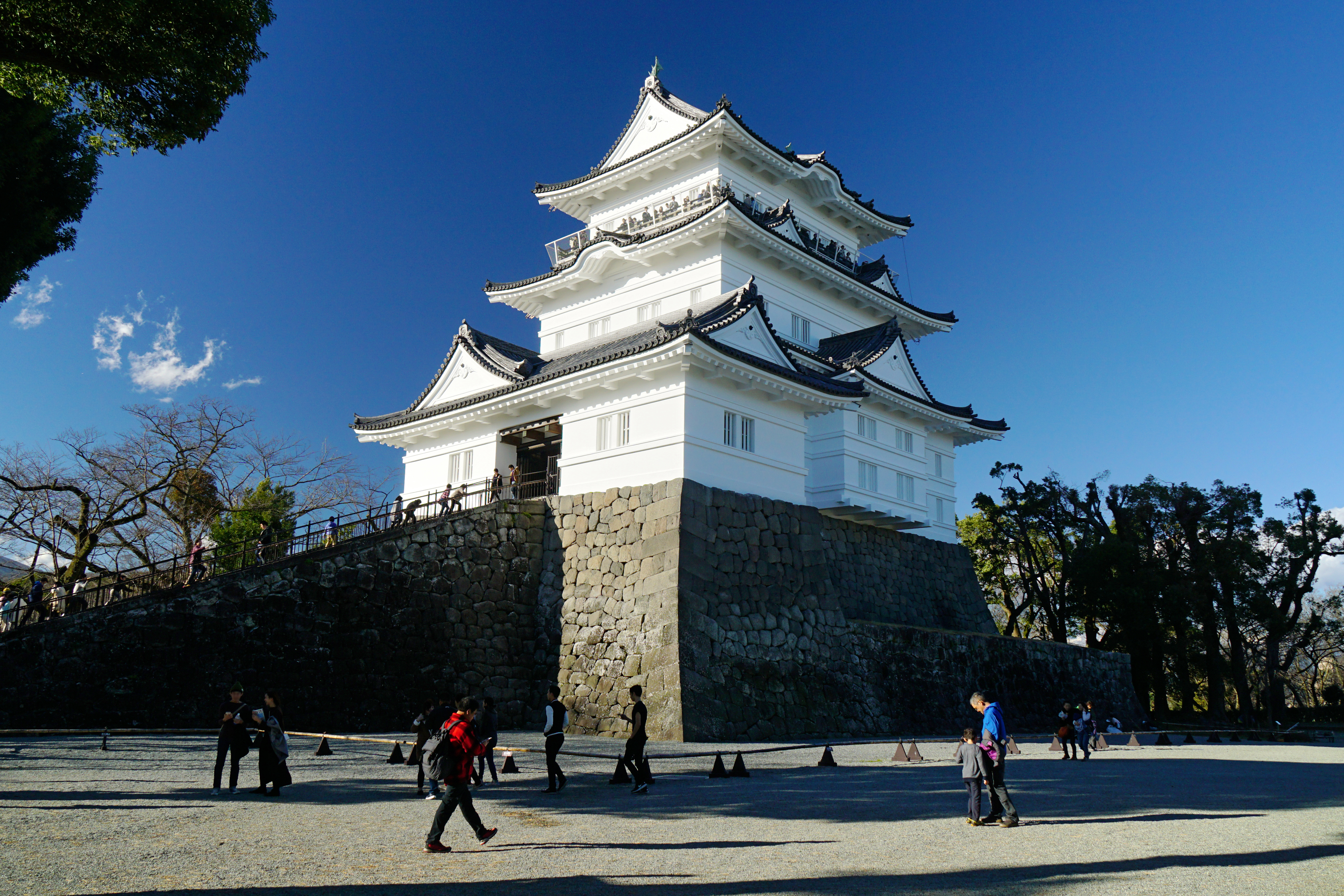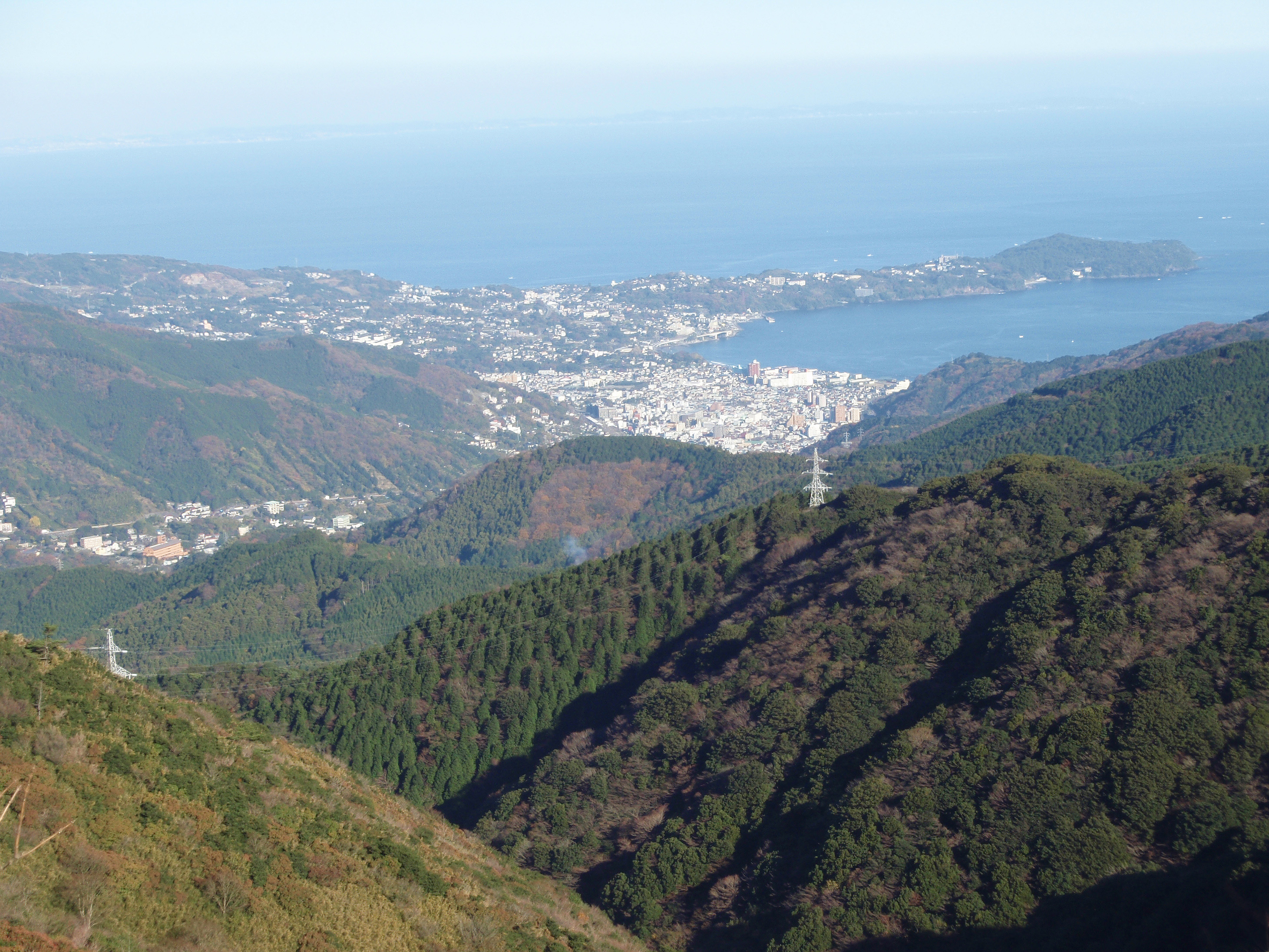|
Hayakawa Station
is a passenger railway station located in the city of Odawara, Kanagawa Prefecture, Japan, operated by the East Japan Railway Company (JR East). Lines Hayakawa Station is served by the Tōkaidō Main Line, and is located 86.0 kilometers from the line’s terminus at Tokyo Station. Station layout The station consists of a single island platform, connected to the station building by a footbridge. The platform is too short to accommodate trains longer than 15 cars in length, so a door cut system is employed.The station is attended. Platforms Station history Hayakawa Station first opened on December 21, 1922, when the section of the Atami-Odawara Line connecting Odawara with Manazuru was completed. From December 1, 1934 this became the Tōkaidō Main Line. Regularly scheduled freight services were discontinued in 1959, and parcel services by 1972. With the dissolution and privatization of the JNR on April 1, 1987, the station came under the control of the East Japan Railway ... [...More Info...] [...Related Items...] OR: [Wikipedia] [Google] [Baidu] |
Odawara
is a city in Kanagawa Prefecture, Japan. , the city had an estimated population of 188,482 and a population density of 1,700 persons per km2. The total area of the city is . Geography Odawara lies in the Ashigara Plains, in the far western portion of Kanagawa Prefecture at the southwestern tip of the Kantō region. It is bordered by the Hakone Mountains to the north and west, the Sakawa River to the east, and Sagami Bay of the Pacific Ocean to the south. Surrounding municipalities Kanagawa Prefecture * Minamiashigara * Ninomiya * Ōi, Kaisei, Nakai *Hakone, Hakone, Manazuru, Yugawara Climate Odawara has a humid subtropical climate (Köppen ''Cfa'') characterized by warm summers and cool winters with light to no snowfall. The average annual temperature in Odawara is 13.4 °C. The average annual rainfall is 2,144 mm with September as the wettest month. The temperatures are highest on average in August, at around 24.2 °C, and lowest in January, at around 2.9&nb ... [...More Info...] [...Related Items...] OR: [Wikipedia] [Google] [Baidu] |
Railway Stations In Kanagawa Prefecture
Rail transport (also known as train transport) is a means of transport that transfers passengers and goods on wheeled vehicles running on rails, which are incorporated in tracks. In contrast to road transport, where the vehicles run on a prepared flat surface, rail vehicles (rolling stock) are directionally guided by the tracks on which they run. Tracks usually consist of steel rails, installed on sleepers (ties) set in ballast, on which the rolling stock, usually fitted with metal wheels, moves. Other variations are also possible, such as "slab track", in which the rails are fastened to a concrete foundation resting on a prepared subsurface. Rolling stock in a rail transport system generally encounters lower frictional resistance than rubber-tyred road vehicles, so passenger and freight cars (carriages and wagons) can be coupled into longer trains. The operation is carried out by a railway company, providing transport between train stations or freight customer facilit ... [...More Info...] [...Related Items...] OR: [Wikipedia] [Google] [Baidu] |
List Of Railway Stations In Japan ...
The links below contain all of the 8579 railway stations in Japan. External links {{Portal bar, Japan, Trains * Railway stations Japan Japan ( ja, 日本, or , and formally , ''Nihonkoku'') is an island country in East Asia. It is situated in the northwest Pacific Ocean, and is bordered on the west by the Sea of Japan, while extending from the Sea of Okhotsk in the north ... [...More Info...] [...Related Items...] OR: [Wikipedia] [Google] [Baidu] |
Midori No Madoguchi
, which stands for ''Multi Access (originally Magnetic-electronic Automatic) seat Reservation System'', is a train ticket reservation system used by the railway companies of former Japanese National Railways, currently Japan Railways Group (JR Group) and travel agencies in Japan, developed jointly by Hitachi and the Railway Information Systems Co., Ltd (JR Systems), a JR Group company jointly owned by the seven members of the group. Outline The host of the system is located in Kokubunji, Tokyo, and managed by JR Systems. Ticket offices at JR stations equipped with MARS terminals are called , selling tickets of all JR Group trains and partly highway buses and route buses and ferries. It is possible for passengers to reserve tickets of buses and trains from one month prior to the given trip. Currently the Midori no Madoguchi is named by JR Group excluding JR Central. History The MARS-1 system was created by Mamoru Hosaka, Yutaka Ohno, and others at the Japanese National Railways' R ... [...More Info...] [...Related Items...] OR: [Wikipedia] [Google] [Baidu] |
IC Card
A smart card, chip card, or integrated circuit card (ICC or IC card) is a physical electronic authentication device, used to control access to a resource. It is typically a plastic credit card-sized card with an embedded integrated circuit (IC) chip. Many smart cards include a pattern of metal contacts to electrically connect to the internal chip. Others are contactless, and some are both. Smart cards can provide personal identification, authentication, data storage, and application processing. Applications include identification, financial, mobile phones (SIM), public transit, computer security, schools, and healthcare. Smart cards may provide strong security authentication for single sign-on (SSO) within organizations. Numerous nations have deployed smart cards throughout their populations. The universal integrated circuit card, or SIM card, is also a type of smart card. , 10.5billion smart card IC chips are manufactured annually, including 5.44billion SIM card IC chips. Hist ... [...More Info...] [...Related Items...] OR: [Wikipedia] [Google] [Baidu] |
Suica
is a prepaid rechargeable contactless smart card, electronic money used as a fare card on train lines in Japan, launched on November 18, 2001. The card can be used interchangeably with JR West's ICOCA in the Kansai region and San'yō region in Okayama, Hiroshima, and Yamaguchi prefectures, and also with JR Central's TOICA, JR Kyushu's SUGOCA, Nishitetsu's Nimoca, and Fukuoka City Subway's Hayakaken area in Fukuoka City and its suburb areas. The card is also increasingly being accepted as a form of electronic money for purchases at stores and kiosks, especially within train stations. As of 2018, JR East reports 69.4 million Suica UID's have been issued, usable at 476,300 point of sale locations, with 6.6 million daily transactions. Since Suica is completely interchangeable with Pasmo (see ''Interoperation'' for the complete listing of companies and lines that accept Suica) in the greater Tokyo area, it is supported on virtually any train, tramway, and bus system (excluding v ... [...More Info...] [...Related Items...] OR: [Wikipedia] [Google] [Baidu] |
Turnstile
A turnstile (also called a turnpike, gateline, baffle gate, automated gate, turn gate in some regions) is a form of gate which allows one person to pass at a time. A turnstile can be configured to enforce one-way human traffic. In addition, a turnstile can restrict passage only to people who insert a coin, ticket, pass, or other method of payment. Modern turnstiles incorporate biometrics, including retina scanning, fingerprints, and other individual human characteristics which can be scanned. Thus a turnstile can be used in the case of paid access (sometimes called a faregate or ticket barrier when used for this purpose), for example to access public transport, a pay toilet, or to restrict access to authorized people, for example in the lobby of an office building. History Turnstiles were originally used, like other forms of stile, to allow human beings to pass while keeping sheep or other livestock penned in. The use of turnstiles in most modern applications has been credit ... [...More Info...] [...Related Items...] OR: [Wikipedia] [Google] [Baidu] |
Privatization
Privatization (also privatisation in British English) can mean several different things, most commonly referring to moving something from the public sector into the private sector. It is also sometimes used as a synonym for deregulation when a heavily regulated private company or industry becomes less regulated. Government functions and services may also be privatised (which may also be known as "franchising" or "out-sourcing"); in this case, private entities are tasked with the implementation of government programs or performance of government services that had previously been the purview of state-run agencies. Some examples include revenue collection, law enforcement, water supply, and prison management. Another definition is that privatization is the sale of a state-owned enterprise or municipally owned corporation to private investors; in this case shares may be traded in the public market for the first time, or for the first time since an enterprise's previous nationaliz ... [...More Info...] [...Related Items...] OR: [Wikipedia] [Google] [Baidu] |
Manazuru
is a town located in Kanagawa Prefecture, Japan. , the town had an estimated population of 6,949 and a population density of 1000 persons per km². The total area of the town is . Geography Located in the southeast of Mount Hakone, the consists of the small Manazuru Peninsula, which extends into Sagami Bay from the southeast to the northwest, sandwiched between Odawara City in the north and Yugawara Town in the south. The Manazuru Peninsula is a lava plateau with a steep coast and The town area is generally rugged with few flat areas. The urban area is at the base of the peninsula, with Manazuru Station to the northwest, Iwa Fishing Port and Iwo Beach to the east, and Manazuru Port to the southeast. There are many quarries in the mountains north of the city. Mandarin oranges are cultivated in the hills along the northern coast. The northwestern part of the town is part of a mountainous area that extends to the outer ring of the Hakone volcano. The town is within the Manazuru H ... [...More Info...] [...Related Items...] OR: [Wikipedia] [Google] [Baidu] |
Takasaki Line
The Takasaki Line ( ja, 高崎線, ) is a Japanese railway line which connects Ōmiya Station in Saitama, Saitama Prefecture and Takasaki Station in Takasaki, Gunma Prefecture. It is owned and operated by the East Japan Railway Company (JR East). All services on the line (excluding through Shonan-Shinjuku Line trains) run to/from Ueno Station is a major railway station in Tokyo's Taitō ward. It is the station used to reach the Ueno district and Ueno Park—which contains Tokyo National Museum, The National Museum of Western Art, Ueno Zoo, Tokyo University of the Arts and other fam ... in Tokyo via the Tōhoku Main Line. The line was extended to Tokyo Station via the Ueno-Tokyo Line that opened in March 2015. As the Takasaki Line serves many major cities within Saitama Prefecture, it is a vital means of transport within the prefecture. Japan National Route 17, National Route 17 and its historical predecessor, the Nakasendō, run parallel to the line. Services Services on ... [...More Info...] [...Related Items...] OR: [Wikipedia] [Google] [Baidu] |
Utsunomiya Line
The Utsunomiya Line ( ja, 宇都宮線, ) is the name given to a 163.5 kilometer section of the Tōhoku Main Line between Tokyo Station in Tokyo and Kuroiso Station in Nasushiobara, Tochigi, Japan. It is part of the East Japan Railway Company (JR East) network. Services Services on the Utsunomiya Line are typically divided into three categories: services to or from Ueno, Shōnan–Shinjuku Line services, and Ueno–Tokyo Line services. Between Ueno and Ōmiya, trains share the track with the Takasaki Line, both of which serve as ''de facto'' express services compared to the parallel Keihin–Tōhoku Line. Northbound services mostly terminate at or , with some at . Southbound trains mostly travel through the Shōnan–Shinjuku Line to on the Yokosuka Line, or the Ueno–Tokyo Line to on the Tōkaidō Line, with a few trains terminating at Ueno. The fastest service on the line, the rapid ''Rabbit'', makes the run between Ueno and Utsunomiya in 1 hour and 26 minutes. Serv ... [...More Info...] [...Related Items...] OR: [Wikipedia] [Google] [Baidu] |



.jpg)


